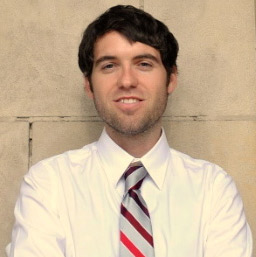
The Court hears oral arguments on legal challenge to EPA rule requiring states to keep pollution from affecting their neighbors.
Who should be in the driver’s seat for regulating interstate air pollution? That is, more or less, the question the United States Supreme Court will decide this coming spring.
This Tuesday, the Court heard oral arguments in a pair of cases (EPA v. EME Homer Generation and American Lung Ass’n v. EME Homer Generation) challenging the validity of the Environmental Protection Agency’s (EPA) so-called good neighbor rule, more technically known as the “Transport Rule.”
Although the issues involved in the cases are multiple, complex, and technical (not to mention substantively important from a policy perspective), the outcomes may turn on how the justices reconcile their ideological predispositions with fairly settled administrative law doctrines. The oral arguments on Tuesday shed some light on how the pivotal justices are thinking about this tension.
The Transport Rule, issued in 2011 by the Obama Administration, requires upwind states that dirty the air in downwind states to reduce their air pollution by some additional amount specified by EPA in a Federal Implementation Plan.
The EPA estimates that the two pollutants the rule deals with—ozone and particulate matter—are responsible for 1 out of every 20 deaths in the United States, and the agency further claims that the rule itself will prevent 23,000 non-fatal heart attacks, 26,000 hospital and emergency room visits, 21,000 cases of acute bronchitis, and 240,000 cases of aggravated asthma, all resulting in net benefits of approximately $103.5 – $263.5 billion.
The rule is at the epicenter of a larger distributional debate about who, among competing regional economies, will have to pick up the tab. When states contribute to deterioration of air quality in downwind states, they are effectively producing an externality, or spillover, and it is of course one of the surest foundations of regulation to eliminate such externalities.
The existence of a problem is not the subject of the legal dispute. At issue instead is the balance of authority across three institutions—the states, the EPA, and the courts—to calibrate the appropriate regulatory response to the problem under the Clean Air Act (CAA).
One of the features of the CAA is cooperative federalism. Under normal circumstances, EPA identifies dangerous air pollutants and sets National Ambient Air Quality Standards (NAAQS) which establish a target level of air quality for each pollutant. States are then responsible for designing State Implementation Plans (SIPs) which seek to achieve compliance with the NAAQS through whatever means the state prefers, and it is only when a state fails to gain approval on the SIP within a certain time period that EPA can unilaterally impose a Federal Implementation Plan (FIP).
Amendments to the CAA in1990 specifically incorporated new statutory language requiring states to adopt SIPs that keep polluters “within the State from emitting any air pollutant in amounts which will contribute significantly to nonattainment in, or interfere with maintenance by, any other State with respect to any [NAAQS].” States therefore were required to supplement their implementation plans with plans to reduce their contribution to interstate pollution.
The NAAQS for the pollutants at issue had been issued before, but the 28 states subject to the Transport Rule had previously failed to deliver an acceptable SIP to comply with the Act’s good neighbor provision. Until the Transport Rule, though, EPA did not give states any specific targets for interstate pollution reduction. During the Obama Administration, EPA developed these targets by using computer models to trace pollution to neighboring states, identifying the states that exceeded threshold levels of allowable interstate pollution, and then requiring all of these states to contribute to an interactive plan to reduce emissions based on their ability to reduce emissions cost-effectively.
In the cases before the Supreme Court, a group of industry representatives, state governments, and local governments challenged EPA’s cost-based approach and its decision to not allow states a new opportunity to develop a SIP.
The United States Court of Appeals for the District of Columbia previously struck down the rule, agreeing that the statute did not allow EPA to set emission reduction plans that are not tailored to a state’s proportion of actual contributions to inter-state pollution nor to quantify states’ interstate pollution and set FIPs without an intervening opportunity for states to design their own plans. That lower court opinion drew a vigorous dissent that likened the challengers’ approach to a collateral attack on the Transport Rule after the states had previously been afforded the opportunity to offer plans.
The Supreme Court’s take on the case will probably hinge on how it views its obligation to enforce the Clean Air Act’s cooperative federalism framework against the competing value of deference to administrative agencies. Courts are supposed to afford agencies deference in interpreting statutory provisions in rules—so-called Chevron deference—and are perhaps even more inclined to do so when rules involve highly technical and complex policy questions of the kind represented in these cases. Only when a statute is unambiguous or an interpretation unreasonable can courts substitute their judgment for the agency’s interpretation. Several of the justices have been strong proponents of Chevron deference, but some of the same justices, including Justice Scalia and Justice Kennedy, have also been champions of states’ rights and dual federalism.
In oral argument, the eight justices hearing the case – Justice Alito recused himself – offered some clues on their likely approach to sorting out the legal puzzle. Most of the justices seemed inclined to agree with the government that the statutory language “contributes significantly” gives EPA plenty of discretion to adopt emission reduction standards based on cost-effectiveness. Justice Kennedy, typically a swing voter on the Court, asked, “Can’t you say that the contribution in one case is more significant than the other based on feasibility? Maybe you can’t?” The attorney for the industry and labor respondents struggled to defuse that possible interpretation.
Only Justice Scalia seemed skeptical that there was any ambiguity, repeatedly responding to the government’s policy arguments by saying, “That’s simply not what the statute envisions.” The attorney for the industry and labor respondents seemed to give away much of the force of their argument by conceding that their “position is that ‘significant’ may have a range of meanings, but it’s not a limitless range of meanings.”
Chief Justice Roberts seemed intrigued by the government’s analogy to a basketball coach who is asked which was a more significant contribution to a loss: a missed routine layup earlier in the game or a missed last-second desperation shot. Presumably, individual contributions by states are not all equally avoidable, which would open up room for EPA to tailor a non-proportional approach.
Even as the justices seemed inclined to defer to EPA’s interpretation of the “contributes significantly” language, they were less clear how they will respond to the state and local government respondents’ argument that EPA should have afforded states an opportunity to submit SIPs before imposing the federal plans on them. The justices seemed worried that it would be unfair for EPA to hold states accountable for their failure to submit plans with good neighbor requirements before the contributions had been quantified.
Chief Justice Roberts asked the government’s attorney what he would do if he represented a state and the state EPA asked him to explain the obligations they had in their SIP to reduce interstate pollution before EPA quantified the state’s contribution, and the government’s response was telling: “We would tell them, in all honesty, we don’t know yet.”
Justice Scalia chimed in, suggesting that EPA was expecting states to “pin the tail on the donkey” before contributions were quantified and then punishing states with a federal plan. Still, Chief Justice Roberts ultimately found little room to quibble with EPA’s approach on statutory grounds, remarking that “it’s certainly hard” on the states, but “it is what the statute says.”
Although it is hard to read the tea leaves of oral argument—indeed, Court-watchers were famously wrong in predicting that the Affordable Care Act would be struck after a so-so performance by the government in oral argument—it seems that the government can be cautiously optimistic that a majority of the justices will vacate the D.C. Circuit’s decision to strike the rule. At the very least, it seems likely that a majority will afford the agency deference on its cost-based approach, and perhaps also on its decision to impose a federal plan.
A total win for the government seems all the more likely since many of the objections to the form of the rule could be recast in future appeals as claims that the rule is arbitrary and capricious—an avenue suggested by some of the justices. In the end, the tone of the oral argument generally hinted that the complexity of the cases and of the underlying policy issue will probably lead the Court to shy away from the D.C. Circuit’s limiting interpretation of the statutory language.




